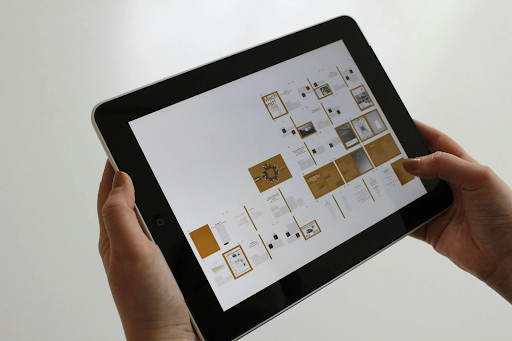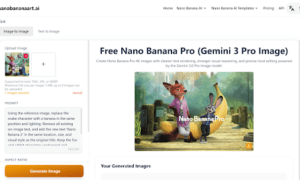Launching a product as a startup demands more than innovation. It requires clarity, intention, and a structured approach to product development. Without a strong foundation of design principles, your product risks falling short of market expectations, even if the idea is promising.
Get to know how to create value, simplify experiences, and maintain usability to shape how your customers perceive and interact with your solution.
Design isn’t just about aesthetics—it’s about function, usability, and making things easier for your users. When you’re building something new, especially with limited resources, every design decision must support your goals and align with your customers’ needs. The right principles from day one save time, cut costs, and increase your chances of product-market fit.
User-Centered Thinking
Everything starts with the user. Your product, either a digital product or a physical one, must solve a real problem, and the only way to ensure that is by deeply understanding your users. Talk to them, observe their habits, and immerse yourself in their environment to build empathy.
Start by conducting user research through interviews, surveys, and usability testing. These insights help you prioritize features that directly address pain points. Instead of guessing what users want, let their behavior and feedback guide your product direction.
Build Personas and Use Cases
Create user personas to humanize your data. These fictional profiles represent different types of users and help guide decisions by keeping their goals and frustrations in mind. When you map out specific use cases, you clarify the scenarios in which your product will be used and ensure it delivers value in each context.
Continuously Validate Assumptions
Don’t wait until your product is complete to test it. Prototype early and test frequently. Every iteration should be an opportunity to learn. By validating your assumptions regularly, you avoid costly pivots later and ensure you’re building the right solution.
Simplicity and Focus
A startup’s strength lies in doing one thing exceptionally well. Trying to be everything to everyone leads to bloated, confusing products that fail to deliver core value. Simplicity makes your product easier to use, faster to build, and more intuitive to scale.
This is where the importance of UX strategy in product design becomes clear—it serves as a guiding framework to maintain clarity, prioritize user needs, and avoid unnecessary complexity from the start.
Reduce Cognitive Load
Keep interfaces clean, with only the essential elements visible at each step. Too many features, buttons, or distractions can overwhelm users and increase drop-off rates. Use progressive disclosure to reveal complexity only when necessary, letting users focus on one task at a time.
Prioritize Core Features
Your minimum viable product (MVP) should deliver one clear, valuable outcome. Strip away anything that doesn’t support that goal. Ask yourself: If I removed this feature, would the product still function and deliver value? If the answer is yes, consider leaving it out.
Focus your design on the most common use cases—you can’t accommodate every edge case from the start, and attempting to do so can paralyze development. Serve the majority of your users well, and refine based on real-world usage over time.
Consistency Across the Experience
A consistent product builds trust. Whether it’s visual design, navigation patterns, or the tone of your microcopy, uniformity across your app or platform reduces friction and helps users learn the interface quickly.
Design systems offer reusable components and design standards that ensure uniformity across your product. These include typography, color palettes, UI components, and interaction behaviors. With a system in place, your team can move faster while maintaining quality.
Reinforce patterns users have seen before. If a button behaves one way on one screen, it should work the same elsewhere. Predictable interactions reduce confusion and make users feel more in control.
Align with Brand Voice
Your product’s tone should match your brand. Whether you’re formal or playful, maintain that voice across all messages—from onboarding to error notifications. This consistency fosters familiarity and makes your startup more memorable.
Scalability by Design
Good design today should still work tomorrow. As your product grows, so will your user base, feature set, and complexity. If you don’t plan for growth, you risk rework, downtime, and poor user experiences.
Structure your product in a way that allows new features to be added without overhauling the whole system. Modularity makes maintenance easier and helps teams work in parallel without stepping on each other’s toes.
Flexible UI Components
Design UI elements that adapt to different screen sizes, data states, and user flows. Responsive design and flexible containers are essential for long-term usability across devices. Anticipate change by avoiding hard-coded elements or layouts that break under pressure.
Think Beyond the MVP
While launching quickly is key, think about how your decisions today will affect future versions. Avoid quick fixes that compromise future flexibility. Design with growth in mind so your product evolves without constant reinvention.
Feedback and Iteration
No design is perfect from the start—the best products are shaped by cycles of feedback, iteration, and continuous learning. Build mechanisms to listen to your users and act on what you learn.
Embed channels for user feedback directly into your product. Use in-app surveys, behavior tracking, and support channels to gather real-time input. When users feel heard, they engage more and stay longer.
Embrace Agile Development
Design and development should move in short, focused cycles. This allows you to release improvements quickly, test their effectiveness, and adjust. Agile practices keep your team aligned and your product responsive to user needs.
Learn from Metrics
Quantitative data complements qualitative feedback. Use analytics to track engagement, retention, and conversion. Identify where users struggle, and prioritize those areas for redesign or optimization.
Conclusion
Design is more than how your product looks—it’s how it works. By anchoring your development process in strong design principles, you build more than just a tool; you create a solution that resonates, scales, and stands out. Every decision, from the layout of a button to the architecture of your platform, plays a role in delivering value.
Startups that succeed don’t just ship features—they craft experiences. That means understanding your users, simplifying their tasks, maintaining clarity across every touchpoint, and being ready to adapt as your product grows. Apply these principles consistently, and you’ll position your startup not only to survive but to lead.



































